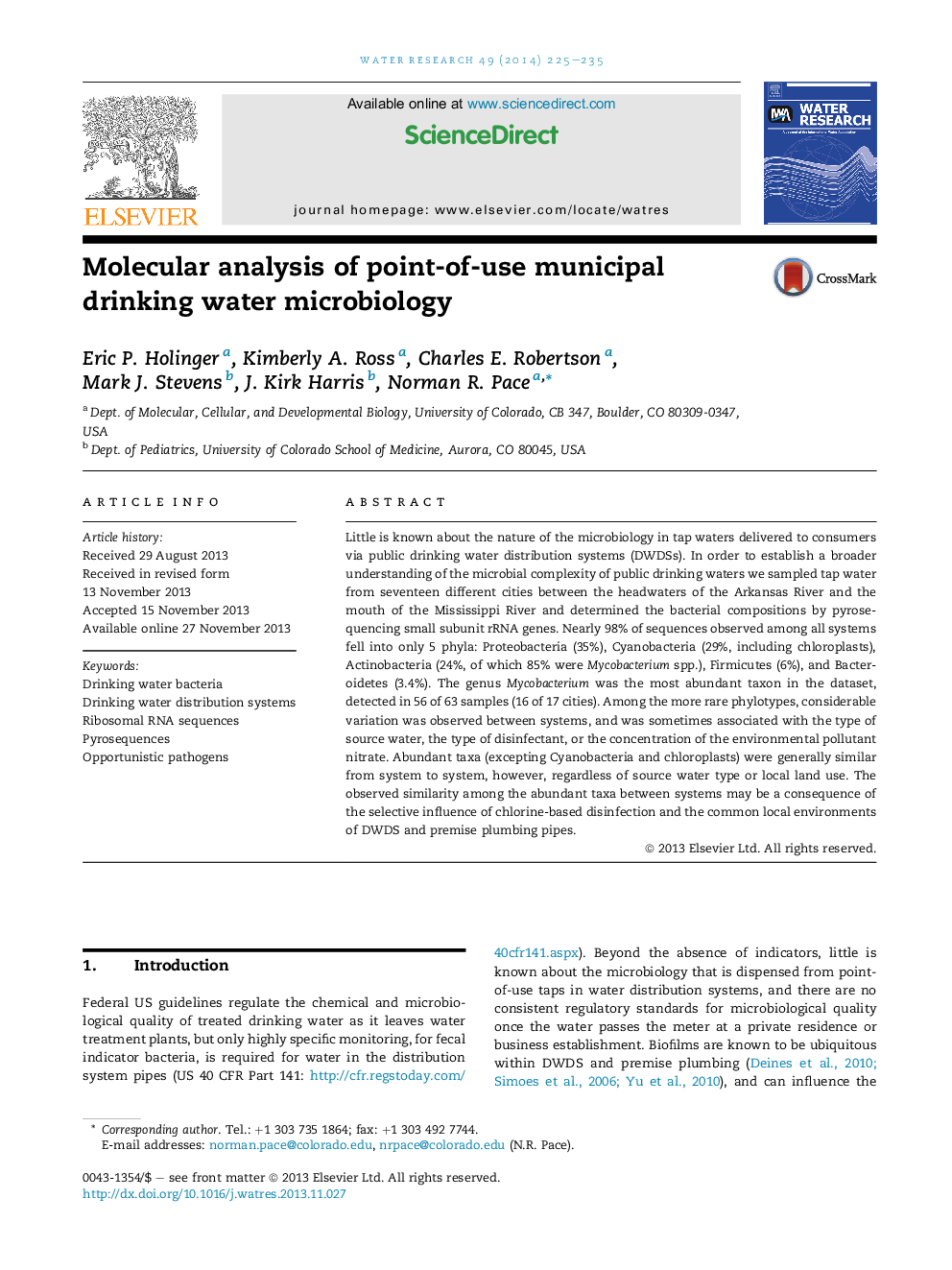| کد مقاله | کد نشریه | سال انتشار | مقاله انگلیسی | نسخه تمام متن |
|---|---|---|---|---|
| 4481705 | 1623119 | 2014 | 11 صفحه PDF | دانلود رایگان |
• Bacteria were identified by ribosomal RNA gene sequence analysis in tap waters across 17 different south-central US cities.
• Bacterial diversity was limited; only 5 phyla comprise nearly 98% of all sequences obtained.
• The abundant taxa were generally similar in all cities; most variation observed was among the rarer taxa.
• Mycobacterium spp. were detected in 56 of 63 samples (89%) and 16 of 17 cities (94%).
Little is known about the nature of the microbiology in tap waters delivered to consumers via public drinking water distribution systems (DWDSs). In order to establish a broader understanding of the microbial complexity of public drinking waters we sampled tap water from seventeen different cities between the headwaters of the Arkansas River and the mouth of the Mississippi River and determined the bacterial compositions by pyrosequencing small subunit rRNA genes. Nearly 98% of sequences observed among all systems fell into only 5 phyla: Proteobacteria (35%), Cyanobacteria (29%, including chloroplasts), Actinobacteria (24%, of which 85% were Mycobacterium spp.), Firmicutes (6%), and Bacteroidetes (3.4%). The genus Mycobacterium was the most abundant taxon in the dataset, detected in 56 of 63 samples (16 of 17 cities). Among the more rare phylotypes, considerable variation was observed between systems, and was sometimes associated with the type of source water, the type of disinfectant, or the concentration of the environmental pollutant nitrate. Abundant taxa (excepting Cyanobacteria and chloroplasts) were generally similar from system to system, however, regardless of source water type or local land use. The observed similarity among the abundant taxa between systems may be a consequence of the selective influence of chlorine-based disinfection and the common local environments of DWDS and premise plumbing pipes.
Figure optionsDownload high-quality image (143 K)Download as PowerPoint slide
Journal: Water Research - Volume 49, 1 February 2014, Pages 225–235
